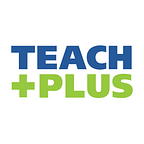The Ability to Read is Life-Changing for Students
By Marielena Gozur
Moises loved writing. He’d write pages and pages for each assignment and hand them in to me with a hesitant, but expectant look in his eyes. Then I would look down at the page and see this: “I wepa dat a grira ma suano wsa grain fmsn calch fo ia can de a vtrinaia das jav mi rima wat ia wcap japan ia jadt a gram.” Moises was attentive to lessons, participated often, and could speak two languages. What Moises was missing as a 4th grader was comprehensive literacy instruction.
Educators have known how reading should be taught for more than 20 years, since the National Reading Panel published research identifying the essential components of reading instruction. This research into the science of reading tells us that skilled reading happens when students receive instruction in both language comprehension and word recognition, or phonics. Language comprehension happens when a reader understands the topic they are reading about, and phonics is the ability to connect sounds to letters. But two decades later, some classrooms are still using curricula that haven’t caught up and are missing one of these key components. The result is that, according to state assessments, 70% of Illinois students read below grade level.
For too many years, teachers like me have been trained to teach reading in a way we now know is ineffective and have been asked to use incomplete curricula. Teachers can only teach what we know, and a generation of teachers were trained to use only half of the science of reading, an approach focused solely on language comprehension. We have been operating under the assumption that if we read to children enough and they practice reading patterned books in guided reading groups, then in the end, they will become proficient readers. Unfortunately, students cannot learn the other half of reading simply by waving a book over their heads. Direct instruction in phonics is required.
The good news is that Illinois’ General Assembly has just passed the Literacy and Justice For All Act, which Governor Pritzker signed just before school started in August. This Act creates evidence-based training for current teachers to update their knowledge of literacy instruction. In addition, it requires future teachers to complete coursework that includes evidenced-based methods for foundational literacy and pass a revised licensure exam that reflects these methods. The Literacy and Justice for All Act ensures that both current and future teachers understand how to teach using the latest research in literacy. Illinois now joins almost 30 other states that have passed laws reflecting the science of reading and are already seeing significant growth in reading scores.
While the law is a great first step in creating an avenue for reforming literacy, the work isn’t finished. It is now up to schools to embrace new curriculum changes and train educators like me in the best practices of teaching literacy. The new law will create lots of great resources, but it doesn’t require schools to take advantage of them. If expectations are clear and consistent across the state, we are sure to grow students who are literate, confident, and successful. On the other hand, if schools opt out and keep the status quo, nothing will change. That’s why it’s so important for my fellow teachers and I, as well as Illinois parents, to know how their schools are teaching reading, and ask whether we’re taking advantage of the new resources to make a difference for students.
In 5th grade it all came together for Moises. He finally had access to teachers with the knowledge of the science of reading and teaching strategies that included phonics instruction of the specific letter patterns and sounds. We taught Moises the sounds of the short vowels and the patterns to look for in words that would contain the short vowel sound. In addition, he learned about digraphs, blends, and word endings. He learned these spelling patterns all while being given opportunities to build his language comprehension with grade level materials. Moises’ confidence in reading and writing rose to a whole new level, and by the end of 5th grade he was able to write this: “My favorite thing is reting with my teacher becuse its fun. She helped me write becuse befor I dont know how to write and I like wrking with her. And I like playing gemes with her becuse its reliy fun. And she is the nises persen.”
When our schools make the changes called for in this new law, students like Moises will find joy in reading, just as he did. Illinois schools must take action to implement the Literacy and Justice for All Act and prioritize improving literacy outcomes. With the knowledge and tools they need to grow proficient readers, teachers can change the trajectory of students’ lives for the better.
Marielena Gozur is a bilingual special education teacher at Cedar Ridge Elementary in Bloomington, the 2022 East Central Regional Teacher of the Year, and a 2022–2023 Teach Plus Illinois Policy Fellow.
